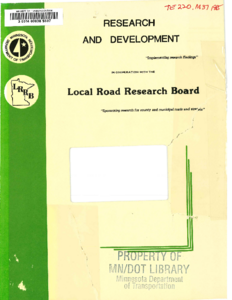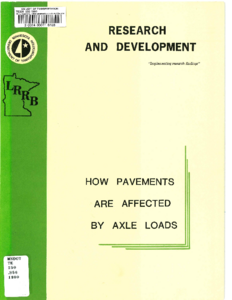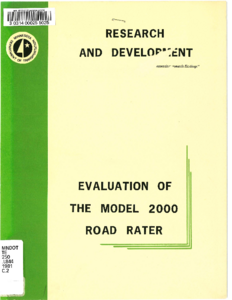Thickness Design of Low-Volume Bituminous-Surfaced Roads: Appendices
Date Created
1985-10
Report Number
86-07A
Description
Thickness Design of Low-Volume Bituminous-Surfaced Roads
Date Created
1985-10
Report Number
86-07
Description
Effect of Tridem-Axle Loading on Concrete Pavement Performance
Date Created
1983-10
Report Number
83-07
Description
Effect of Frozen Support on Concrete Pavement Performance
Date Created
1983-10
Report Number
83-06
Description










